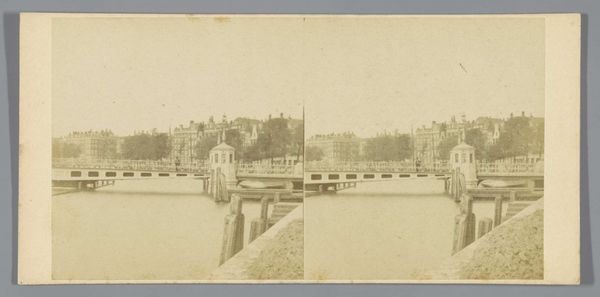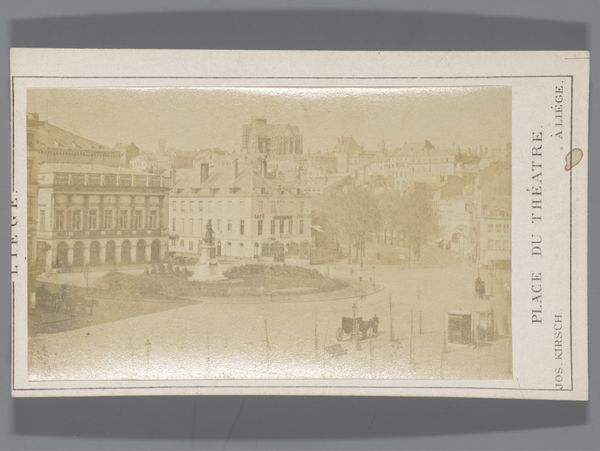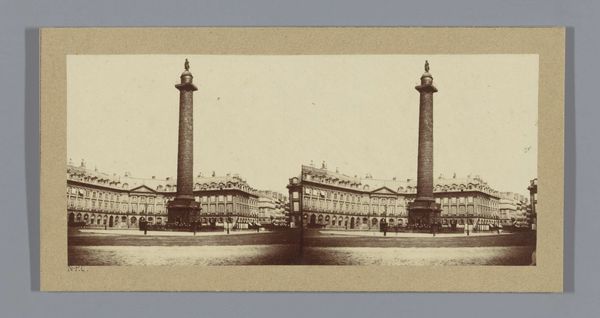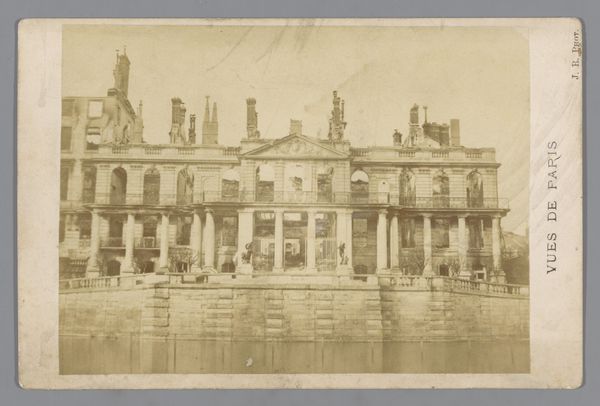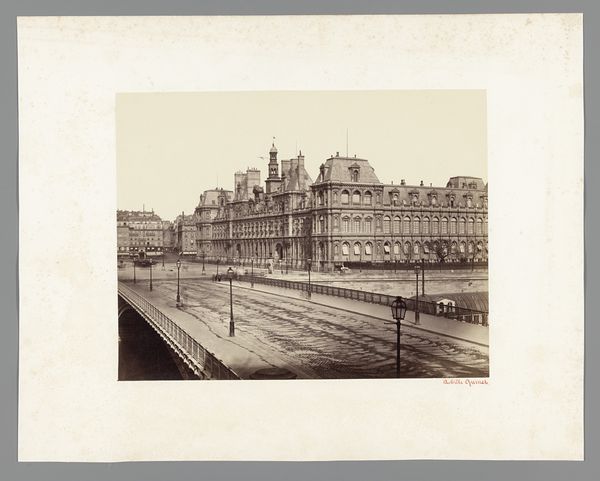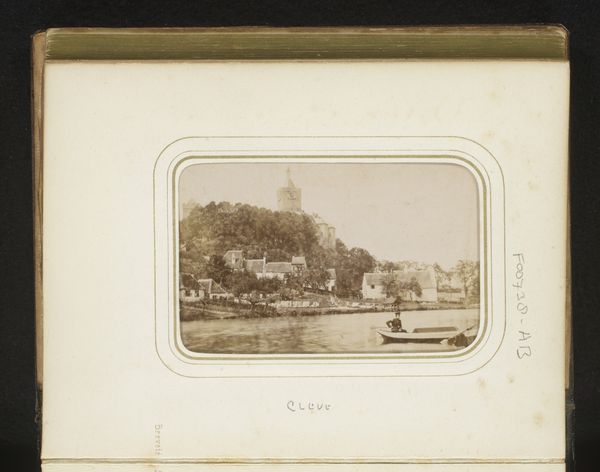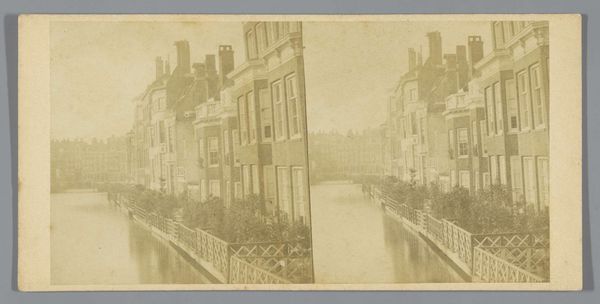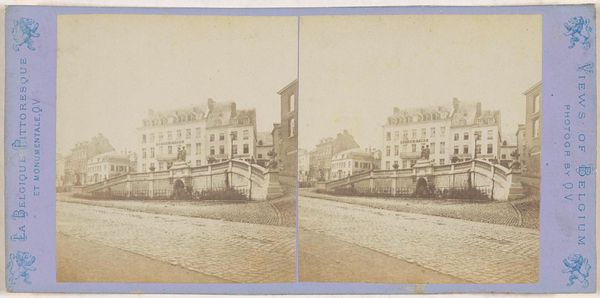
Dimensions: height 80 mm, width 175 mm
Copyright: Rijks Museum: Open Domain
Curator: Looking at this, I'm immediately struck by the somber tone. There's a dreaminess, almost a fading quality to the image, as if memory itself is tinging the scene sepia. Editor: Indeed. We are viewing "Gezicht op het Palais du Luxembourg in Parijs," an albumen print crafted before 1857, quite likely by the hand of Léon Pierre Jouvin. This work presents the Palais du Luxembourg captured in the infancy of photography. Curator: Infancy! Precisely the sensation I get. It’s not crisp like today’s architectural photos. More like an etching in light and shadow. A bit romantic, wouldn't you say? Editor: Absolutely. The albumen print process, in its early application, lends itself to the romantic style. We see that softened focus combined with a clear depiction of civic architecture that serves a purpose; romantic in depiction yet grounded in its public utility. It speaks to how new technologies adapt to established socio-political structures. Curator: Right! You can almost smell the coal smoke and hear the clatter of horse-drawn carriages. What's fascinating to me is that even though it’s a cityscape, it’s deeply…interior, you know? It evokes the hushed quality of old drawing rooms where sunlight filters through lace curtains. A very different sensation compared to the bustle of, say, a Daumier lithograph depicting Paris at this time. Editor: That's an interesting observation. The scale plays a part; a stereoscopic view would typically be small, made for intimate viewing at home. Consider also how Jouvin carefully positions the camera to incorporate those statues into the composition, hinting at both power and historical continuity while avoiding direct depictions of people. The very absence creates a kind of historical tableau. Curator: Yes! Absence, that's key. And somehow that lends a sense of timelessness, even though it's obviously rooted in a particular moment in Paris. It's not about a bustling street; it's about permanence...maybe a longing for it, too. Editor: The capture and preservation of such monumental structures during the transformative 19th century fulfilled the civic need to showcase urban development. However, works such as Jouvin's may unintentionally capture a feeling of fleeting permanence—the paradox of the captured image—something that certainly resonates. Curator: Agreed. This little window into a past Paris reveals a delicate intersection of civic pride, artistic sensibility, and a touch of wistful transience. Editor: It's a testament to how early photography engaged not just with representation but also with a city’s developing identity in an era of massive social and political shift. A silent yet eloquent visual document.
Comments
No comments
Be the first to comment and join the conversation on the ultimate creative platform.
